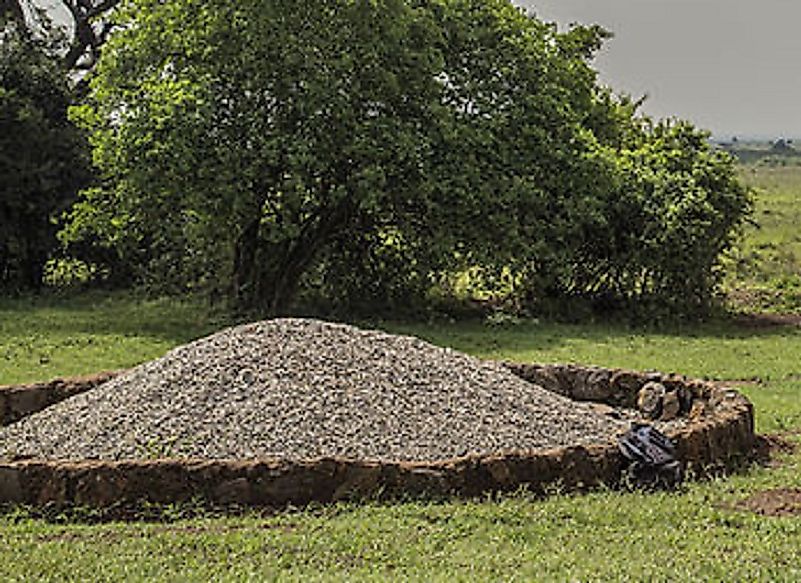Ivory Burning: Does It Deter Elephant Poaching In Kenya?

5. Elephant Poaching and the Ivory Trade
For many years, the elephants of the world have been mercilessly hunted down, trapped and killed by poachers for their tusks which have been processed to form highly valuable ivory products and sold in the black markets of the world. The elephant poaching incident is the biggest example of how the power of human greed can decimate the population of a majestic species and render the species endangered within only a short span of time. As per a report published in the August 19th issue of the Proceedings of the National Academy of Sciences, 100,000 elephants were poached in Africa between the three year period of 2010 to 2012. Thus, one in every twelve elephants in Africa were poached for ivory. In Central Africa, within only a decade, 64% of the elephant population was lost to poaching events. Between June of 2009 and 2014, 170 tons of ivory were estimated to have been illegally trafficked and the price of ivory also skyrocketed from a mere $5 USD per kilogram in 1989 to $2,100 USD per kilogram in 2014 in China. The lure of such a lucrative income has led to unsustainable rates of elephant poaching in Africa, threatening the very existence of these majestic creatures. What is worse, a 2014 Wildlife Conservation Society report stated that each day the world loses 96 elephants to poaching incidents.
4. Destruction of Ivory by Law Enforcement
Ivory has often been confiscated by law and enforcement officials dealing with cases of illicit ivory trade. The confiscated ivory thus presents a big question to the legal system of the country: is it to be destroyed to prove the worthlessness of ivory or is it to be sold legally in the international market? In 1989, Richard Leakey, then head of Kenya's Wildlife Conservation and Management Department, decided to go for the former option by burning down 12 tons of ivory confiscated by his organization in a highly publicized event. The event was attended by the Kenyan President as well as journalists and other media persons from all across the globe, drawing the much-needed attention towards the elephant poaching incidents prevailing in Kenya. The success of this Kenyan ivory burning episode soon encouraged the governments of other countries to adopt similar procedures. Confiscated ivory has been burned or pulverized with legal consent in such countries as the United Arab Emirates, Zambia, Philippines, Gabon, the United States, and France.
3. Notable Ivory Destruction Events
According to World Wildlife Fund, 14 countries of the world have destroyed ivory in highly publicized events. The most notable ivory burning event of the world occurred as recently as April 30, 2016. On this day, the Kenyan President Uhuru Kenyatta set a mound of ivory on fire using a torch, initiating the event that involved the burning of 105 tons of ivory, alongside 1.5 tons of rhino horns. The ivory was stockpiled in 11 pyramidal mounds, and each mound was set on fire. This was the largest ivory destruction recorded so far, and the ivory being burnt at this event represented the tusks from the remains of between 6,000 and 7,000 poached elephants. The ivory that was destroyed was worth $300 million USD on the international black market.
2. Effects on the Illicit Ivory Trade
Two antagonistic lines of thought exist regarding the effects of destruction of confiscated ivory. A section of economists and conservationists feel that destruction of stockpiled ivory will only create a vacuum in the international illegal market for ivory, further elevating the demand for ivory and raising its prices, ultimately leading to greater poaching of elephants. The opposing view mentions that destruction of ivory, instead of encouraging further poaching, will attract the attention of the entire world towards the futile nature of the ivory trade, create mass-scale awareness among the public and possibly even deliver a message to those who buy ivory but are ignorant of the status of elephants and the merciless killings involved in procuring ivory. The highly publicized ivory destruction events could actually lead to a lowering of the demand for an object that is associated with criminality, abhorrence, and death.
1. Criticism and Alternatives
The destruction of ivory has been both heavily praised and highly criticized by different sections of the society for the reasons mentioned above. Some countries like Botswana have used an alternative method to exhibit opposition to the ivory trade where confiscated ivory have been transformed into publicly displayed art pieces like the statue of an elephant built entirely of confiscated tusks at the Botswana international airport, to raise awareness of the public against the illegal trade. Those supporting the destruction of illegally confiscated ivory claim that the use of this ivory for commercial gains even in a legal manner, could symbolize a kind of support for the illegal trade. It could instead of discouraging, encourage the public to view ivory as a highly sought-after material that has immense commercial value attached to it. Thus, they feel the best way to exhibit protest against the illicit trade that pushes thousands of elephants to a painful and sad death would be to completely burn away the ivory to ashes.











